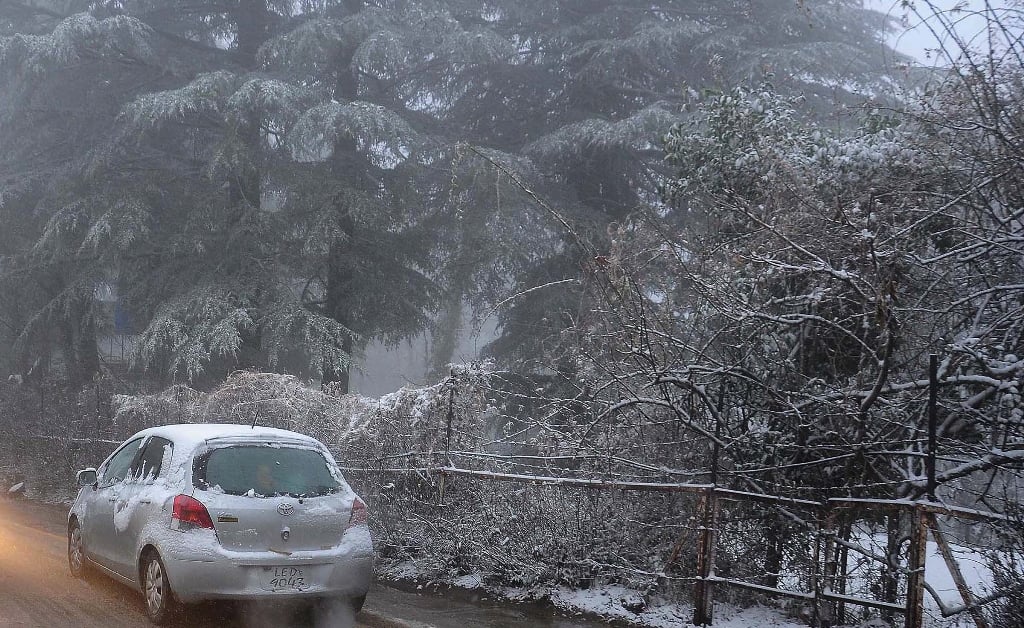
In order to understand what is happening in the restive northern border areas of New Delhi, we need to look at the country’s history. When I talk about history, I mean both the colonial past and the more recent time dominated by Hindu nationalists under the leadership of Prime Minister Narendra Modi. The British rulers in India after the Great Mutiny of 1857 wanted to keep the citizens of the province of Punjab on their side. Punjabis provided a significant number of soldiers to the British Indian Army but the Muslim population of the area was under considerable stress. At risk was the economic wellbeing of the people who depended on agriculture for their livelihood. Punjab’s agriculturists were Muslims or Sikhs. The Hindu bania, the merchant class, was able to use its market power to pay low prices for agricultural output which was sold at considerably higher prices in the urban area. The bania also provided loans to the farming community in return for the farmland pledged as security. If the loan was not paid back as was often the case, the moneylender acquired the mortgaged land. In order to deal with this situation, the British introduced a number of laws, most notably the Land Alienation Act of 1901 and various Agricultural Marketing Acts in the 1930s. The former banned the Hindu community to own agricultural land while the latter had the state procure agricultural surpluses at the prices that were favourable for the farmers. These laws bought peace in Punjab’s countryside which lasted for more than a century. It was disturbed by the laws passed in late 2020 by the Hindu nationalist Bharatiya Janata Party, the BJP.
Prime Minister Modi, elected to office first in 2014, and then re-elected in a landslide in 2019, promised further easing of constrains on private enterprise. However, his government ran into stiff resistance from some actors in the economy. The farming community of the northern states of Punjab and Haryana that border the capital city of New Delhi was one of those that rebelled against the government’s moves. The two states constitute only 3% of the country’s land area but produce close to 50% of its surplus. It was the adoption of high-yielding wheat and rice technologies in the late 1960s and the early 1970s that brought what came to be called the “green revolution” to the two states. The farmers in the two states were best prepared to adopt the new technologies. They owned the land they farmed and had larger holdings compared with farmers in other states where feudal landlords leased tiny pockets of land to tenant farmers and didn’t bother to invest in the type of mechanisation that was behind the green revolutions in Punjab and Haryana. After these moves by the farming communities of the two states, yields increased spectacularly and India, that had become a food-deficit country at the time of its birth in 1947, almost completely stopped importing rice and bought wheat from foreign markets only in bad years.
In September 2020, the Modi government hurried through the Indian parliament a new set of laws that laid down the framework for private traders rather than government managed boards to purchase farm output. The farmers unions believed that the laws would lead to the breakdown of the government marketing boards which purchased much of the surplus food grain at prices negotiated by the farming community and authorities. The famers protested, pointing to the experience of the eastern state of Bihar where similar laws were enacted 15 years earlier. Those laws in Bihar led to the dismantling of government marketing structure, with the number of sales centres declining by 87%. The markets never offered the promised better remuneration for the produce. However, farmers in Punjab sold their rice produce last year for the government mandated price of $25 for 100 kilograms, while farmers in Bihar were forced to sell for $16 for 100 kilograms in the open market. The Punjabi farming community feared that the entry of the private sector would bring in such behemoths as the Reliance Group and the Advani Group into agriculture.
The protesters want the Modi government to withdraw the three laws passed in September 2020 that ended state support for agriculture in Punjab. The state support came in the form of guaranteed prices for agricultural output. On January 12, 2021, India’s Supreme Court suspended the implementation of the three laws until further notice, but farmer leaders gave no sign that they would call off the protest. The new laws could also have serious political consequences for Prime Minister Modi and his party. “The Sikh distaste for the Hindu nationalist project that Mr Modi espouses has ensured that attempts to co-opt them as part of discourse that leaves out Muslims and Christians have largely failed,” writes an analyst, Hartosh Singh Bal, in an article published in the magazine, The Caravan. “The Sikh peasantry’s history of mobilisations and protests over agricultural issues goes back over a century. An upsurge uncannily similar to the continuing protests forced the British rulers to take back laws that challenged ownership of the land in 1907.”
The farmer’s protest took an ugly turn on January 26 when India celebrated the Republic Day. It was on that date that the country adopted its Constitution and became a republic. As official India was celebrating, the farmers received the permission to enter Delhi, the capital city, and follow the designated route. Hundreds who broke away from the main group and forced their way toward the centre of the city, taking over a major intersection and climbing the ramparts of Delhi’s famed Red Fort, built in the 17th century. For Modi — the most powerful Indian prime minister in five decades — the farm reforms represent a rare miscalculation. According to Mahesh Rangarajan, a historian at Asoka University in Delhi, the anger among farmers reflects a larger crisis of stagnation of incomes in states such as Punjab and Haryana, which “generally saw rising prosperity in the last 50 years. The law is only a flash point.”
Several India-watchers inside the country as well as those who look at it from the outside saw ominous signs in these developments. Gyan Prakash, a professor of history at Princeton University, said the closest parallel to the present time was in the 1970s, during the period in India called the “emergency rule”. The prime minister at that time, Indira Gandhi curbed civil liberties, imprisoned political opponents, and shut down the news media. But the BJP onslaught is also very different and even more damaging to whatever remains of democracy in India. Prakash cited what he called “a creeping dismantling of the pillars of democracy under Modi from the coercion and control of the mainstream to influencing of the courts. Critics often call it an ‘undeclared emergency’. It is much worse and more damaging in the long term, because the arrests and the denial of bail to detainees is an assault on whatever remains of the institutions of the rule law.”
Published in The Express Tribune, February 15th, 2021.
Like Opinion & Editorial on Facebook, follow @ETOpEd on Twitter to receive all updates on all our daily pieces.


















COMMENTS
Comments are moderated and generally will be posted if they are on-topic and not abusive.
For more information, please see our Comments FAQ